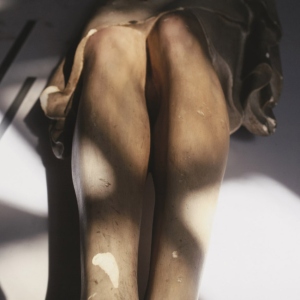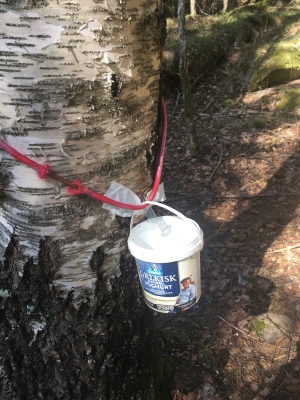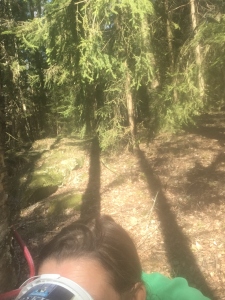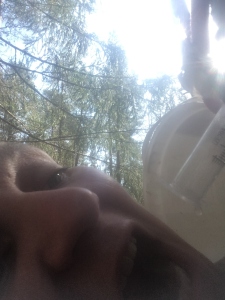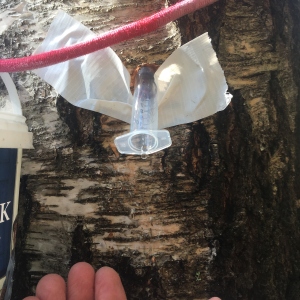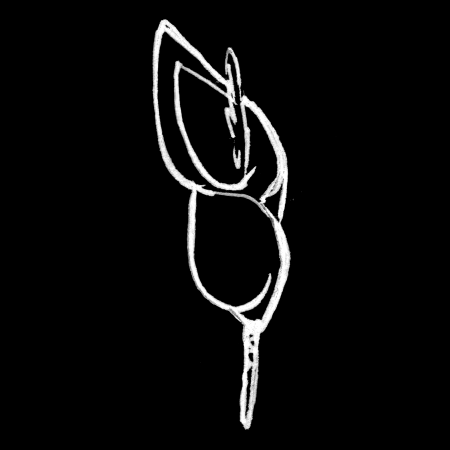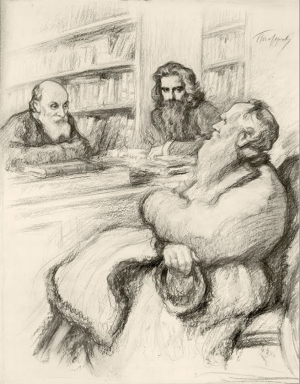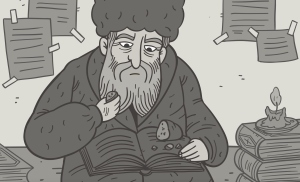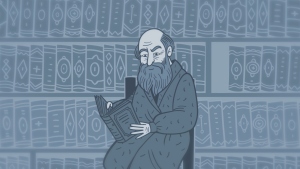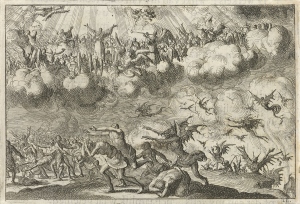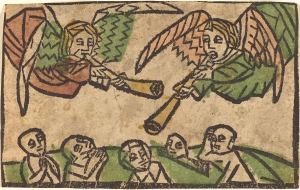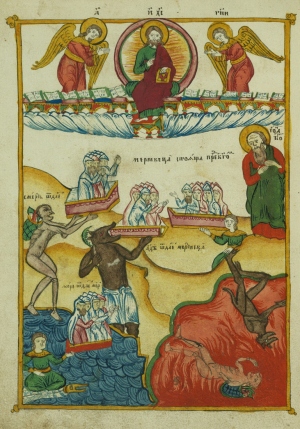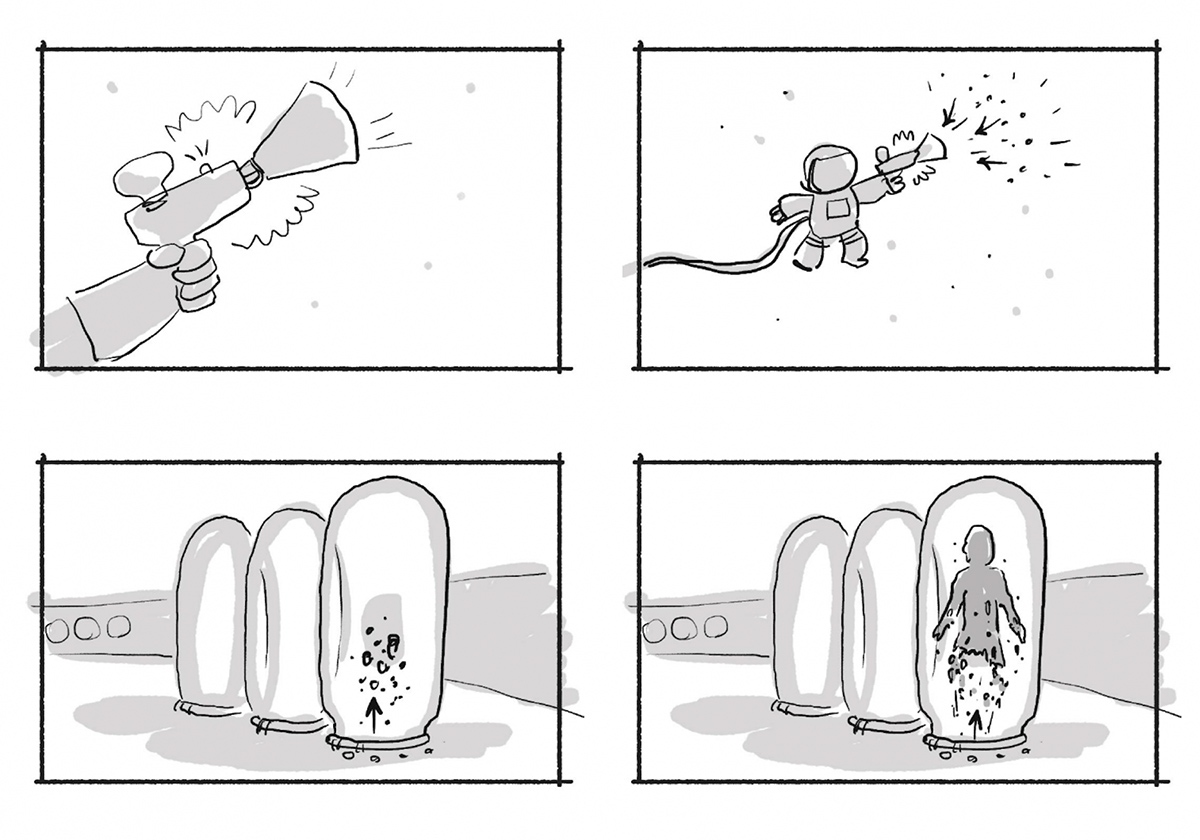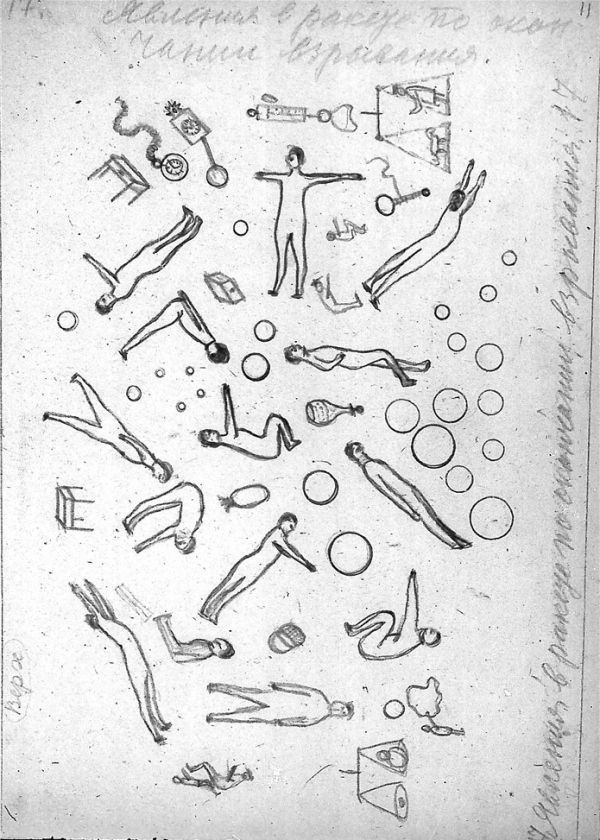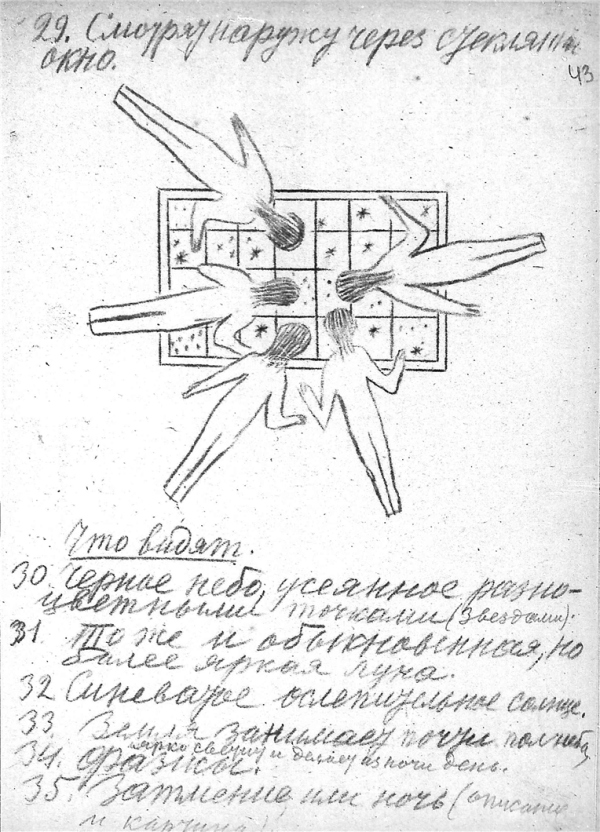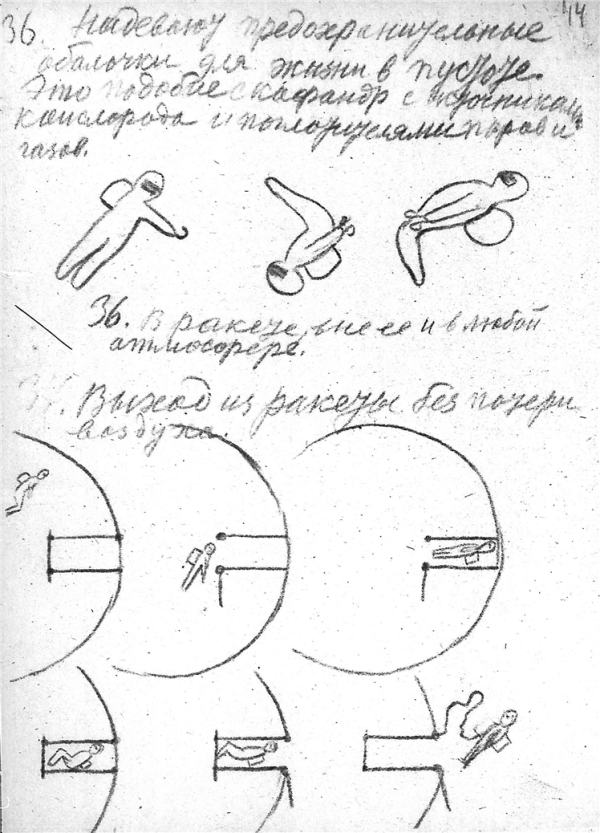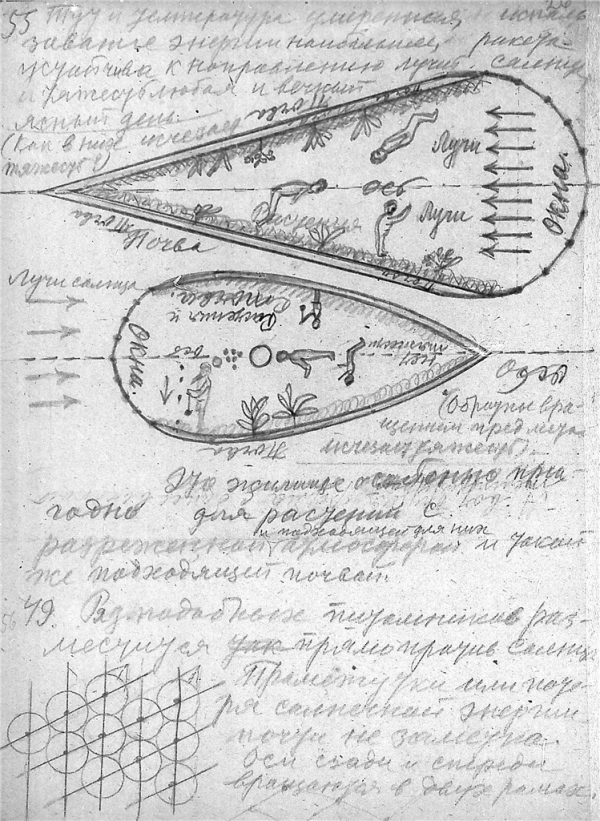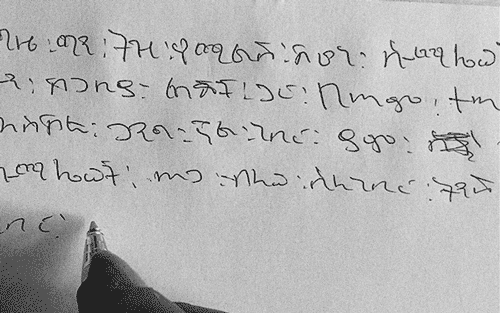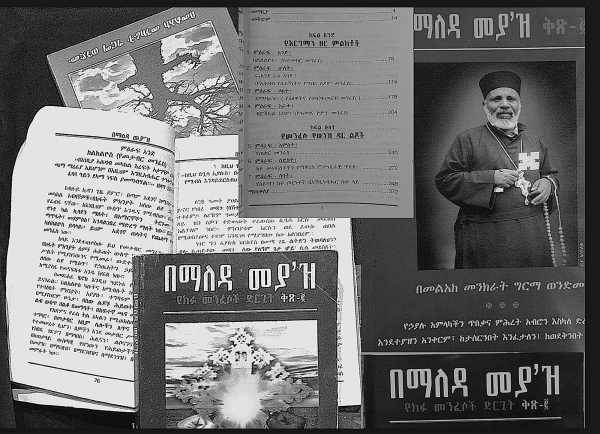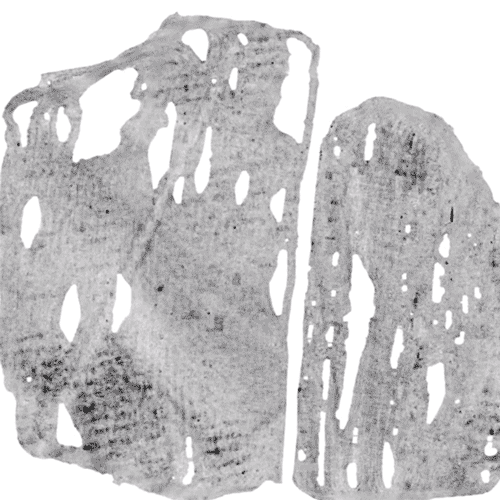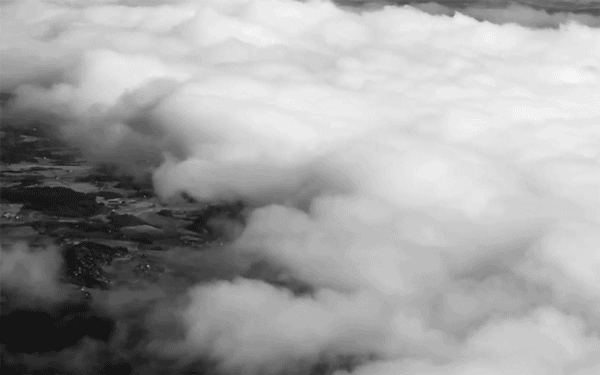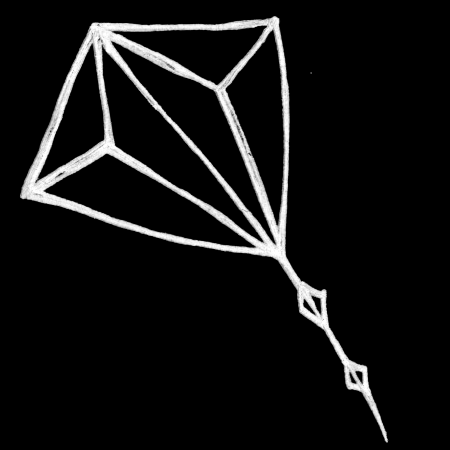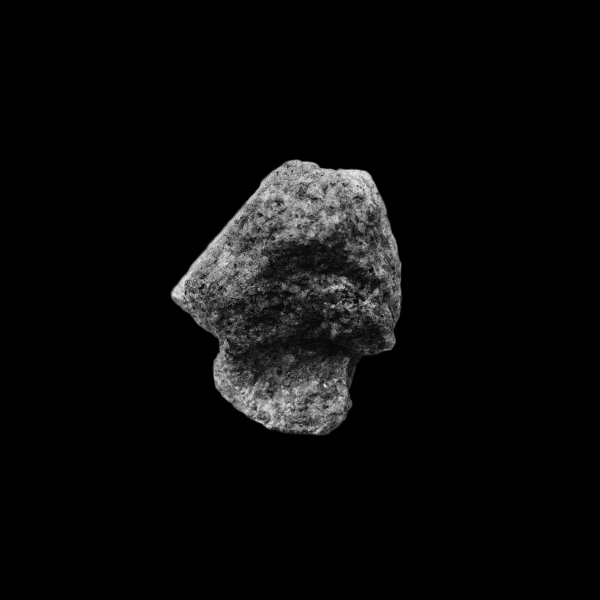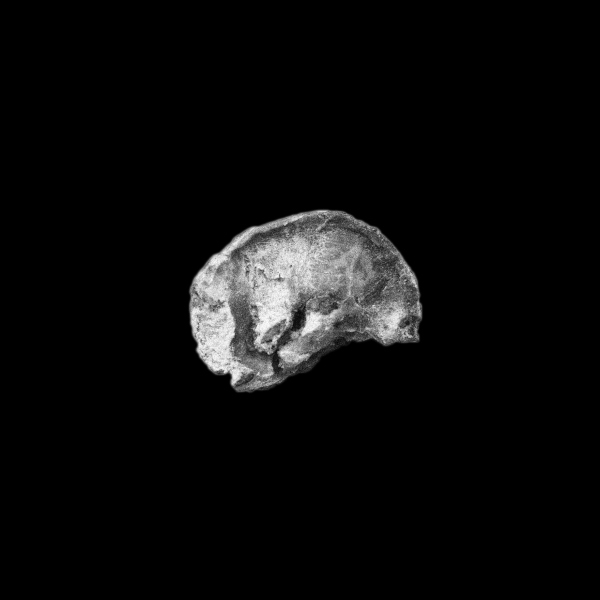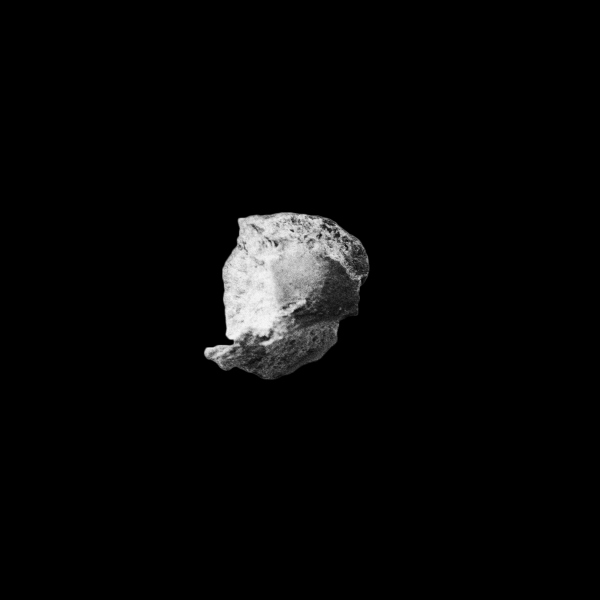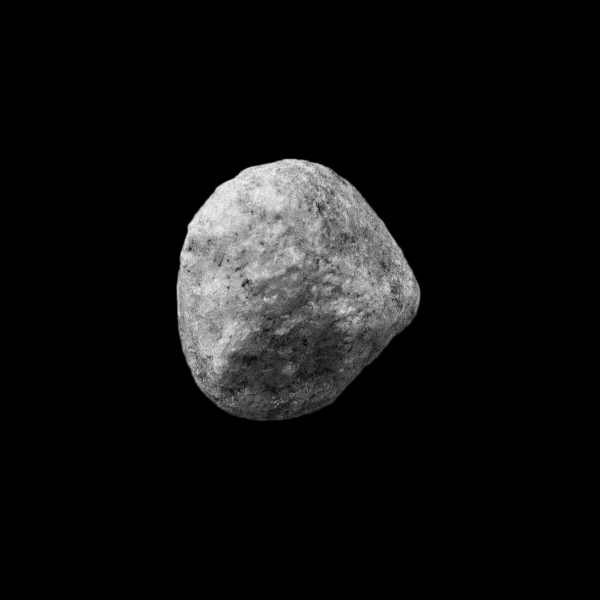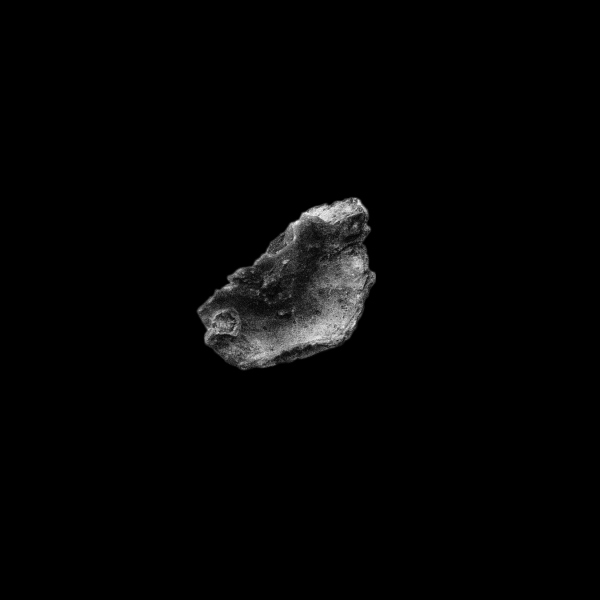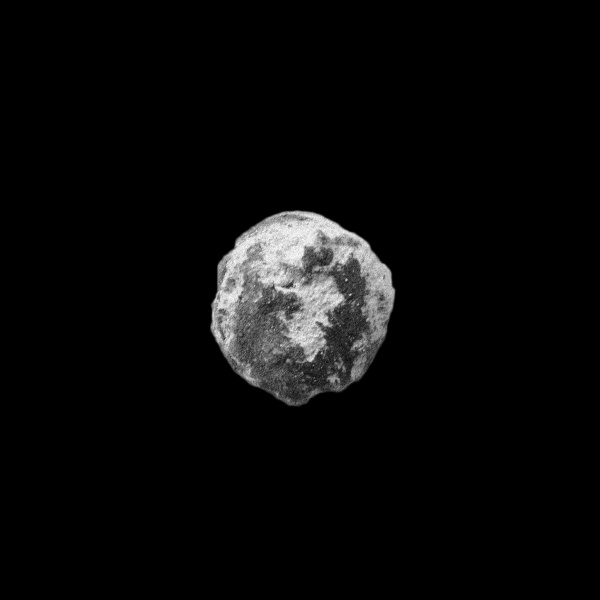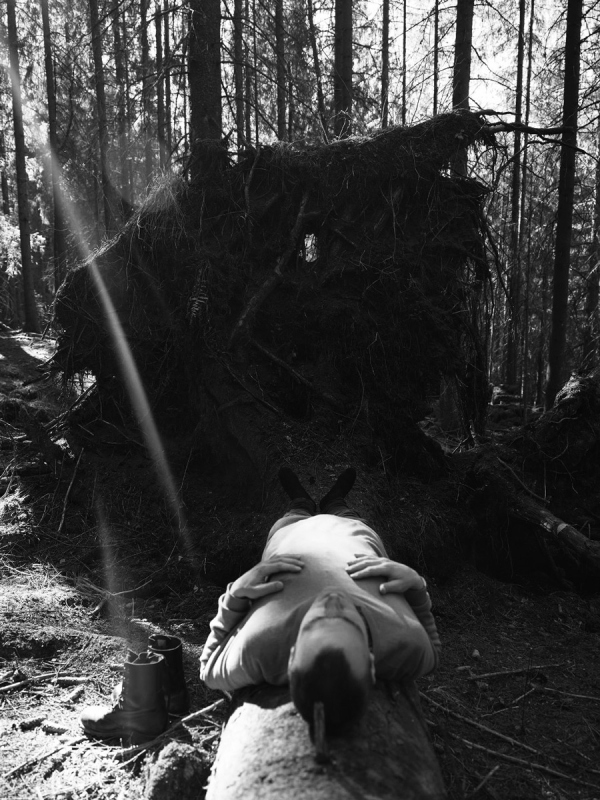
-
Koret fra jorda, kjevene på vidt gap
under varme kropper og skritt på bakken
– sangerne som fikk et annet publikum
etter at kirkegården ble populær park
og folk ville ligge med dem i sola
la mage og underliv suge til seg –
stemmene fra et ellers dødsstille kor
hvordan parken synger nedenfra og opp
kroppene, de døde er ikke som før
underlivet trykker mot bakken, lytter.
–
Flerstemmig ensomhet, koret som skygger
uten mistanke om død og mer enn tegn
på overleveringen, en gammel sang
skjærer flokken til kroppen enda en gang
hjertet i oppstandelsen – hvem sangen gjør
samlet sett ut av seg til en skikkelse
som også kan ha vært en person du vet.
–
Den døde, stemmen og ansiktet virker
fortsatt helt levende, hvordan vennene
vekker sine kjære til live igjen
alltid opprettholder en hukommelse
så langt muligheten for å elske fins
håp om gjenforening, selv den verste
tiden for spøkelset i manns minne snur.
–
Våre døde blir mødre til et nytt liv
sangernes varianter av spøkelset
lar seg puste, når det kommer til stykket
er all luften pust og ingenting annet
sirkulær uendelighet og lineær
våren kommer jo også enda en gang
ett «sted» i kosmos våren aldri har vært
hva nå meningen er med posisjoner
om ikke for noen annen grunn enn parken.
–
Om bare ett tre står igjen av skogen
er det like gjerne skogen etter brannen
som mangler ett tre, som treet mangler skog.
–
Vi snakker fortsatt nesten samme språket
i det vi åpner munnen og slipper inn
alle skyggene av ordet stemmen tar
og dirrer hukommelse i kroppene
det opprinnelige evangeliet
åpner slik «i begynnelsen var Tone».
–
Sangundervisningen i unntakstilstand
–
Hvordan mennesket begynte å snakke –
først ble hun selvsagt stum stilt foran språket.
–
Gudene vet å dø som skriften, uendelig
ankommet første punkt i tegnparadis
– aldri i livet om døden slutter, nei.
–
Gravstøttene på kirkegården om natten
antenner for undergrunnsbevegelsen
søkende i søvne via gravene
etter levende som drømmer de døde
litt som folk dukker opp i parken og blir
en stund samme tid og sted om sommeren
så vi kan spørre, hvorfor akkurat oss?
–
Det er heller ingen drøm før hun våkner
–
Under uendelig krig, propagandada
alt styret rundt forestillingsevnen vår
– å forstyrre så mange syn som mulig
til frykten gjør oss helt blinde for syner
og vi ikke kan se verden forsvinne.
–
Symptomet på henne, Phytias visjon
tvangsbehandlet, erstattet av appetitt
på sukker og fett, visjonen isolert
en indre stemme opptatt med stoffskifte
og lagring av mye nytt fett på kroppen
som før var ørkenmager, salt og syrlig
behandlingen som forsøker å ramme
hennes evne til å nå inn uendelig
når hun blir «smittsom narkoman terrorist».
–
De døde i parken døde før krigen
første verdenskrig og helt nye våpen
sennepsgassen i vinddraget som etser
øyne, hud og lunger, en ung pappas død
etterlatte som ikke visste hvor fæl
krigen kunne bli da de vinket farvel
til sine kjærester ombord på toget
ingen av dem hadde hørt om sennepsgass
og hvem hadde forestilt seg gasskamre
i neste krig, deretter Agent Orange?
–
Samtidsmennesket kommer til å dø ut
liksom hjulpet til sin egen undergang.
–
Også gåsa har latt seg lokke til slutt
når hun tror hun har funnet flokken igjen
og lander over geværmunningene
skutt i brystet etter den lange reisen
seks tusen meter over havet, så høyt
bare for å finne verden forrædersk
et ellers troverdig språk helt ødelagt
– om fuglen allikevel overlever
i visshet om at sangen har blitt felle
det fineste i verden en undergang
hvordan leve videre og være gås
fra nå av å måtte la seg avlokke
til en gjess-fri sone, begynne på nytt
der ingen kunne tro gjess lot seg lokke
med høyfrekvent sang selv hunden ikke hører
tilsynelatende stumme gjess som lander
i parken for å gresse noen dager
før neste etappe seks tusen meter
over havet, og hva fikk henne opp dit?
–
Intimiteten holder oss utestengt
fra både offentlig og privat
– noe i nærheten av et serveringssted
å skulle konsumere informasjon
stadig mer tilpasset «seg» for å styre
tankene dine i retning av denne
og ikke lenger henne som før elsket
å se deg ute for å ta deg med inn –
som om vi ikke kjenner lys og mørke
bare skumringstimen tjuefire-sju
eller demringstimen for algoritmen.
–
Vanvittige begrensninger for kroppen
de straffeforfulgte, hver enste en
som ikke gjør hjemmet sitt om til en leir.
–
Sikkert på tide å minnes Niels Christie
han advarte «mot gulag, vestlig type»
dødsdømte fangers organer transplantert
når alle parter virker så fornøyde
pasienten med sitt forlengede liv
legen med sin vellykkede operasjon
den dømte som kan gjøre litt opp for seg
mot å bli lik organiske tilstander
når mennesket skal donere kroppen sin
til en ny uendelig krig, mot smitte.
–
Å arrestere den alt arresterte
masseprodusert like før ansiktet
normaliteten i forsvinningsnumre.
–
Jeg vet ikke hva kroppen er i stand til
–
Intermessomodus på scenekanten
graven mellom scene og sal som spiller
opp til dans, publikums hopp over graven
til alle står sammen på scenen, klare
for neste akt av «ny uendelig krig»
stimulert av de siste frekvensene
som viser seg for hver enkelt på en skjerm
å være i stand til å styre scenen
oss sammen hver for seg som i salen igjen
satt til å framføre salen på scenen.
–
Slaget ved Argonne, René Margrittes bilde
en like stor stein som sky på himmelen
en ny dag etter sennepsgassangrepet
volumene som nå kan skifte substans.
–
Fjellene smuldrer og drysser i havet
overalt koagulerer Ymes blod
puddinghavet uten bølger, kun dissing
stram og slapp, ikke lenger flo og fjære
etter at Ymes knokler løste seg opp
og planeten ble dekket av dyp gele
basis for en ny skapelsesberetning
gelelivet som lever av geleen
som om grisen Særimne spiste seg selv.
–
Mytologiens møte med vitenskap
om kosmisk stråling gir vanndampen kjerner
kondensasjonskjerner til skydannelsen
og skyer i skapelsesberetningen
kommer av Ymes hjerne, finner tanken
sted der kosmisk stråling gjør nytt regn mulig
– om ikke kondensasjonskjerner heller
kommer fra havet med planteplankton
som tilfører luften sulfatpartikler
når en algeoppblomstring gir oss skyer
og Ymes hjerne likner en slags grønnsak.
–
Gitt i gave til de underjordiske
bakterier, sopp og videre opp i kjeden
mark som gjerne tar seg til overflaten
krypende blant levninger også på vei
knokler som har skilt lag med kjøttet, kroppen
som fordeler seg lik Yme, kjøtt blir jord
knoklene blir fjell, skjelettet vil kneise
og hjernen bygge seg opp som skyene.
–
Den som synger vil bli husket syngende
–
Sola skinner bakken tørr, fjorårsløvet
blir et himmerike for meitemarken
på vei opp fra graven, forbi knoklene
opp til løvet en vårnatt, festmåltidet
vi som er vare for støy i stillheten
kan høre høylydt om natten, invasjon
og begjær i bakken, døde som våkner
oppstandelse varslet av knitring i løv
de seksti tusen som reiser seg sammen.
–
Svarttrosten varsler også oppstandelse
hver vår i parken, fra toppen av et tre
når påskemorgen naturligvis gjelder
livet med alle sine måter å ta
døden på Sofienberg, en meitemark
som krøp opp i fjorårsløvet for tidlig
en ettermiddag svarttrosten jaktet på den
lyttende etter knitring i løvet, marken
avslørt og sjanseløs mot nebbet, slukt hel
etset i hjel av magesyre, omgjort
i metabolismen til en svarttrosthann
og sang fra toppen av et tre i parken
øverst ligger seksti tusen mennesker
litt lenger ned ligger landdyr og fugler
i det marine laget ligger sjødyr
under der igjen vulkaner, lag på lag
– hvordan jordskorpen vil ta seg ut sprukket
opp av alles oppstandelse, når marken
fortært av den døde fuglen, står opp fra fugl
elg står opp fra ulv, due fra hauk og slik
står vi opp av hverandre til jorden gjenstår
som om den også kunne vært uten liv
en mulighet som har fått filosofen
til å spørre «hva tror jorden at den er?».
–
En matt perle funnet i parken om våren
tegn fra en kvinne like under bakken
som varsler sin oppstandelse i gresset
om noen år, eller etter en vinter
med skikkelig tele som løfter henne opp.
–
Sofie stryker årringer i benken
lar kroppen kjenne ensomheten endret
av besøk fra alle som har satt seg der
i solnedgangen mellom gamle løvtrær
– å minnes en tidligere solnedgang
at sola kan spøke selv om den lyser
hvem vet igrunnen hvor dyp skyggen kan bli.
–
Livet på månen lar seg lyse i tegn
etter døden, de som fortsatt vil gi oss
fullmånetillit om vi tar signalene
siden kvinner blør og menn ikke sover
slik sammenhengen av og til viser seg
– og klart de på månen har sett rart på oss
før Apollo 11 og satellittene
hvordan verden kunne ta så rigid form
et helt kontinent forvandlet til ruter
eller tegn til månen fra livet fengslet.
–
Det premature mennesket må gjøre mor
utvendig svanger – tidlig nok utfordret
av dada-ordre – i omgang med språket
bevare seg og sin livmorpersepsjon
en stund til i synestesihimmelen
hallusinere på forhold, se syner
men også finne leseren i seg selv
en tredje part som heller tenker seg fri
enn å representere din posisjon
progressivt profilert «omstillingsdyktig»
av en trippelagent for kommandoen
som har vunnet alle representantene
i verdens parlamenter ved å gi dem
de globale privilegienes orden
første grad, hen erklærer unntakstilstand
siste grad, å endelig bestemme hvem
som får leve og hvem som simpelthen dør
før menneskeparken er robotens ark
i kosmisk vakuum og lysets hastighet
så folk kunne tro kjernevåpen ble kjød.
–
Omstilling etter Arkimedes’ g-punkt
som glasskrigere i en trojansk glasshest
knuser seg inn i skrittet, ride ranke
skåret opp under såre enkle forsøk
medisinske kropper, ofre for sjansen
som uaktsomme politikere tok
fra å være immune til å dø hen.
–
Bekken til bekken tisser opprinnelsen
–
I Sofienbergparkens naturtilstand
spirer mange slags engplanter om våren
bringebær, geitrams, valmuer og kløver
snart blomster og frø i sol og halvskygge
fra asketrær, Yggdrasilminiatyrer
som suger opp vannet fra gjennomvåt jord
når snøen har smeltet under vårregnet
telen tint og enga virker bløt som myr
hva den trolig hadde vært, Sofiemyr
om ikke Torshovbekken drenerte den
Tollundmenn og kvinner ellers funnet der
sånn fem tusen år etter at de døde
i stedet for å stikke opp av jorda
etter et kort opphold, bare bein igjen
ingen oljesvarte lik og myrmystikk
bekken har for lengst gravd ut et vidstrakt søkk
lett å finne for den høydefølsomme
på tur i sørvestre hjørne av parken
kanskje overveldet av å stå foran
den glemte gravlunden som et utstrakt amfi
hvor publikum ligger i en slak skråning
rundt bekken, seksti tusen på tribunen.
–
De hellige stedene hvor gaver gis
og tas imot av guder, offerstedet
dyrenes innvoller brent, mat i gassen
guder som puster seg mette på kroppens
indre organer fresende på bålet
sankthansdugnaden når vi helt enkelt dør
unna så befolkningsveksten samlet sett
fra Wirtschaftswunder, antibiotika
og til siste piggproteinfrontkjemper
blir borte, så selv den hissige guden
vemmes av offeret, mer å regne som
forurensning enn en gave, kroppsmengden
når tidenes største forbruker skal gi seg.
–
Om vi måtte spise kjøtt til nattverden
ikke godt å vite, hadde det hjulpet grisen
om Jesus ikke var semitt, men nordisk
og delte svinekjøtt med disiplene
i norrøn tradisjon – grisen Særimne
som blir spist i Valhall hver eneste dag
og som vokser seg stor igjen like fort –
ville nattverden gitt grisen bedre kår
skånet dyret for industriell binge
betonggulv og ugriselige forhold
eller er det nettopp slik produksjonen
forholder seg til Jesus i dag? Pint gris
som menneskene likner mer og mer stakkars.
–
Den nye normalen blir nok dødsnormal
en oppfinnsomhet i negativitet
vi før bare har sett i KZ-leirer
– den uendelige krigen mot smitte
som om alle mennesker var narkomane
da krigen mot narkotika begynte
videre potensielle terrorister –
smittsomme narkomane terrorister.
–
Måtte vi bli reddet på intuisjon
sammen om å bli satellittmotsatte.
–
En skyggegjenåpning av fellesskapet
i en tid vi ellers mister hverandre
til den nye normalens tvangsforestilling
– umyndiggjorte mennesker i forsøk
internert i en fleksibel leir, brakken
som viser seg å være ditt eget hjem
den tvers igjennom kontrollerte kroppen
en slags lukket psykiatrisk avdeling
invertert på det tidligere samfunnet
framført som ordre livsviktig å følge
ellers et kort liv – allikevel var det
liv laga for sorte får i ørkenen.
–
Kjerringa mot strømmen elleve ganger
–
De døde har forlatt graven, de vil ut
av kister, ut av familier og klassen
de engang tilhørte begrenset og trangt
gjort til brikker i krigs og profittspillet
livet langs våpenfabrikkens samlebånd
monotont arbeid med eksplosivene
en lik dag fra konfirmasjon til pensjon
– om ikke en bombe da eksploderer
og hele samlebåndet går i lufta
så alle må spørre seg hva som gikk galt
var det et uhell eller kanskje selvmord
en som tok produksjonsprosessen helt ut
samlebåndet forvandlet til fronten selv
hva var ellers meningen med arbeidet?
–
Å stemme sin tilbakevirkende kraft
–
De døde nærmer seg mål, overflaten
spettet med stafettpinner til vekslingen
i parken skjer det støtt at noen finner
noens levning å ta med seg videre.
–
Kroppene kolliderer på veien opp
bein fra hver sin familiegrav skrår ut
gravnaboer som nærmer seg hverandre
og møtes etter hundre og femti år
sammen om å komme helt fram, endelig
blottlegge seg som hverandres i døden
bekken mot bekken og to hodeskaller
panne mot panne, løftet opp av telen
liggende i vårsola, matt skinnende
etter den lange reisen fra grav til park
liksom hemmeligholdt av parkvesenet
at en folkevandring kan finne sted der
i mulm og mørke, telefolk som stiger
– og den helt store puljen av vandrere
er å vente de nærmeste årene
et par strenge vintre setter fart på dem
vandrere på sin siste etappe opp
til tusen tipp tipp tipp tipp tippoldebarn
blant dem kanskje en og annen som finner
sammenhengen mellom seg selv og en hånd
som holder på et bekken, hvem det nå er.

